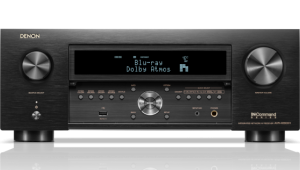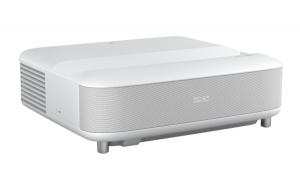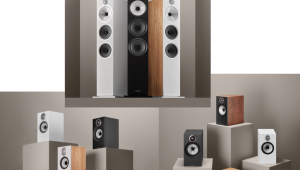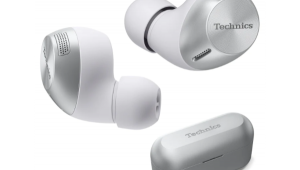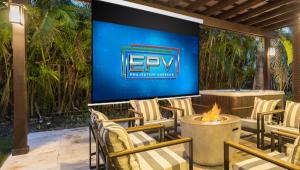Tech Trends 2013: Audio Page 3
Mega All-in-One Wireless Systems
Everyman's hi-fi gets bigger and better
What's the surest sign that you're an audiophile? If you routinely express dismay over the way other people listen to music. These days, an audiophile can find plenty to complain about: MP3, bass-boosted celeb headphones, and, of course, the despised iPod dock.
But docks are changing fast. Sure, you can still buy a sucky sub-$100 dock, but the companies that know good sound know you'll appreciate something better. So docks are getting bigger, better, more stylish, and more sophisticated. Even some of the most respected names in the speaker biz are willing to not only slap their brand on the fron, but put their best talent on engineering the speakers and circuits inside.
Part of this massive upgrade effort was probably inspired by the fact that most docks aren't docks anymore. While you can find a few that still allow direct connection of an iPod, iPhone, or iPad, the shift to wireless connections gets many of today's docks past the sonic limitations of the iPod. Many new docks include AirPlay and/or DLNA wireless technologies, which can deliver true uncompressed CD-quality sound. Even most Bluetooth-equipped speakers can deliver better sound, thanks to the use of the increasingly ubiquitous apt-X codec. With such high-quality signals going into today's docks, upgrading to high-quality amps and speaker drivers makes more sense.
Judging from the docks I saw at the 2013 Consumer Electronics Show, nobody's going bigger than Klipsch. The company's Stadium wireless speaker resembles a P.A. system more than an iPod dock, with Klipsch's trademark horn-loaded tweeters plus horn-loaded 3.5-inch woofers and even horn-shaped woofer ports. The volume is almost P.A.-like; based on the demo I got, I'd guess the Stadium can exceed 100 dB without sounding ratty. Although the Stadium looks like two separate speakers, a bottom plate joins the two halves. Klipsch claims a ±3-dB frequency response from 26 Hz to 24 kHz, which would make the Stadium a better-engineered product than most standalone speakers. The $2,000 Stadium includes AirPlay, Bluetooth, and DLNA wireless. (If your SPL goals are more modest, check out the new $399 KMC 3.)
The new Polk Audio Woodbourne brings some of the old-school charm of your granddad's hi-fi into a wireless dock; it almost looks like it should come with a free briar pipe and a Dave Brubeck record. With 180 total watts of amplification, dual 5.25-inch woofers, and dual 1-inch tweeters, the $599 Woodbourne packs the muscle of a trad hi-fi, but with Bluetooth, AirPlay, and a computer-friendly USB input, it's got a lot more tech inside.
The new $499 Monitor Audio Airstream S300 AirPlay speaker blends the high-quality drivers you'd expect from the company with the automatic room-correction technology found in most receivers. The 4-inch woofs and 1-inch tweets use the same C-CAM (composite ceramic/metal) diaphragms as Monitor's regular speakers, powered by 150 total watts of amplification. After you place the S300, it can emit a test tone and "listen" to the result on its built-in microphone, then automatically adjust its bass response to compensate for the effects of nearby walls.
None of the above docks will do a darned thing unless you connect them to some sort of audio source. The Paradigm Aera AirPlay speaker will still give you sound even if Apple Maps inspires you to hurl your iPhone out your car window. An onboard user interface lets you stream Spotify, Pandora, RDIO, and other online services directly off the Internet. Dual 4-inch composite cone woofers and 1-inch aluminum tweeters should deliver pretty serious sound. Estimated price is $599.
Why does MTX's relatively minuscule Street Audio iT1air AirPlay/DLNA speaker cost a massive $799? 'Cause it's got a heavy aluminum enclosure that reduces resonance. When I lifted the iT1air at CES, the 22-pound device felt more like a brick. And when I played it, it sounded as powerful as many good-size home systems. That little enclosure packs 180 total watts of power, split between two 1-inch tweeters, two 3-inch midranges, and two 5.25-inch side-firing woofers. From the sound, I'd say it's pretty beefy stuff - not surprising given MTX's car-audio heritage.
If you have an iPhone 5, an iPad mini, or a fourth-generation iPad and you really don't want to fuss with wireless, JBL makes it simple with the $399 OnBeat Rumble, recently reviewed here by S&V's Ken Pohlmann. Atop the Rumble sits a dock using Apple's new, oft-derided eight-pin Lightning connector that'll mate mechanically with the company's latest mobile devices. A 4.5-inch internal subwoofer should allow the Rumble to live up to its name. It's not just for Apple people, though, because it also offers Bluetooth. And the dock folds flush into the top when not in use.
I expect at least two or three major speaker companies to launch their first wireless docks by the end of 2013. And why not? Even audiophiles have music on their phones - and even audiophiles have spaces in their home where a big traditional system just doesn't make sense.
- Log in or register to post comments








